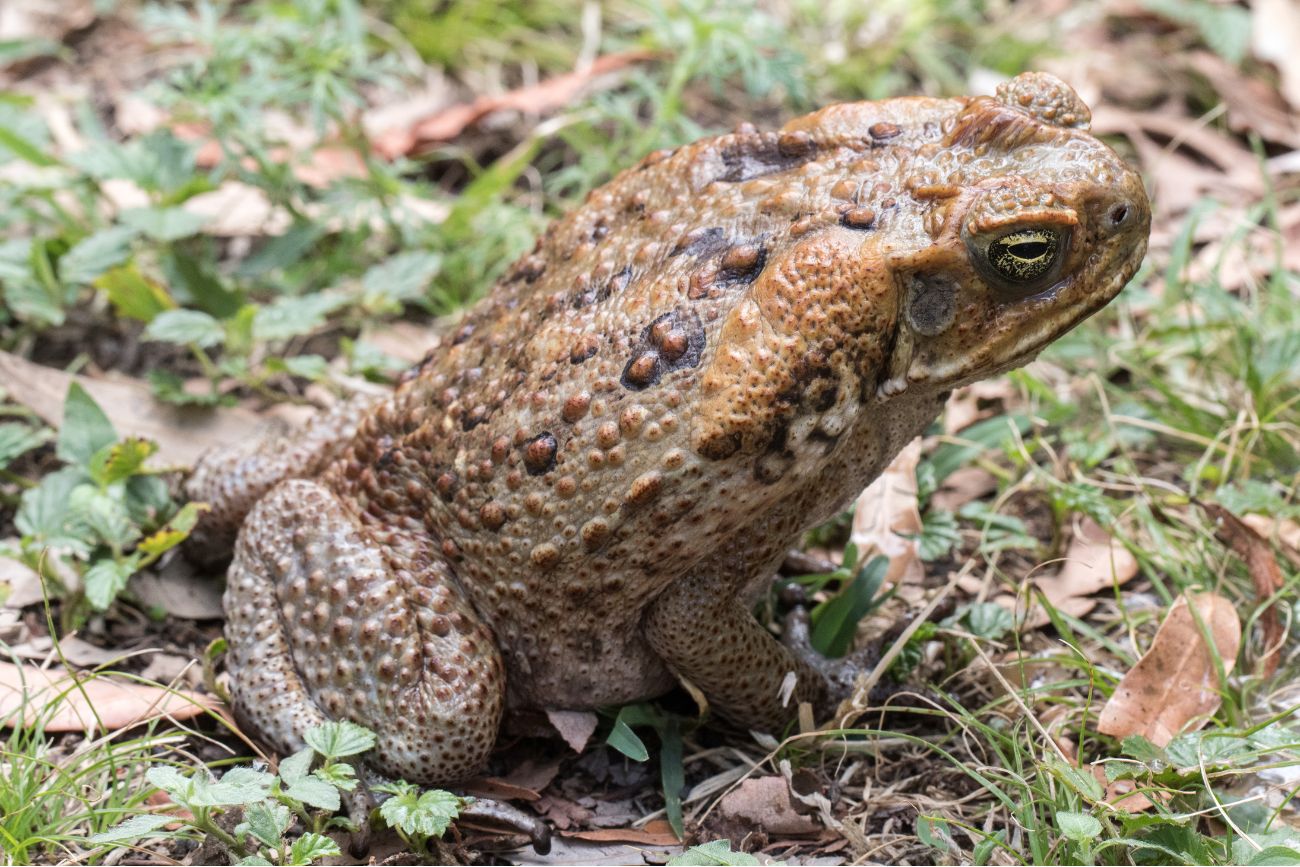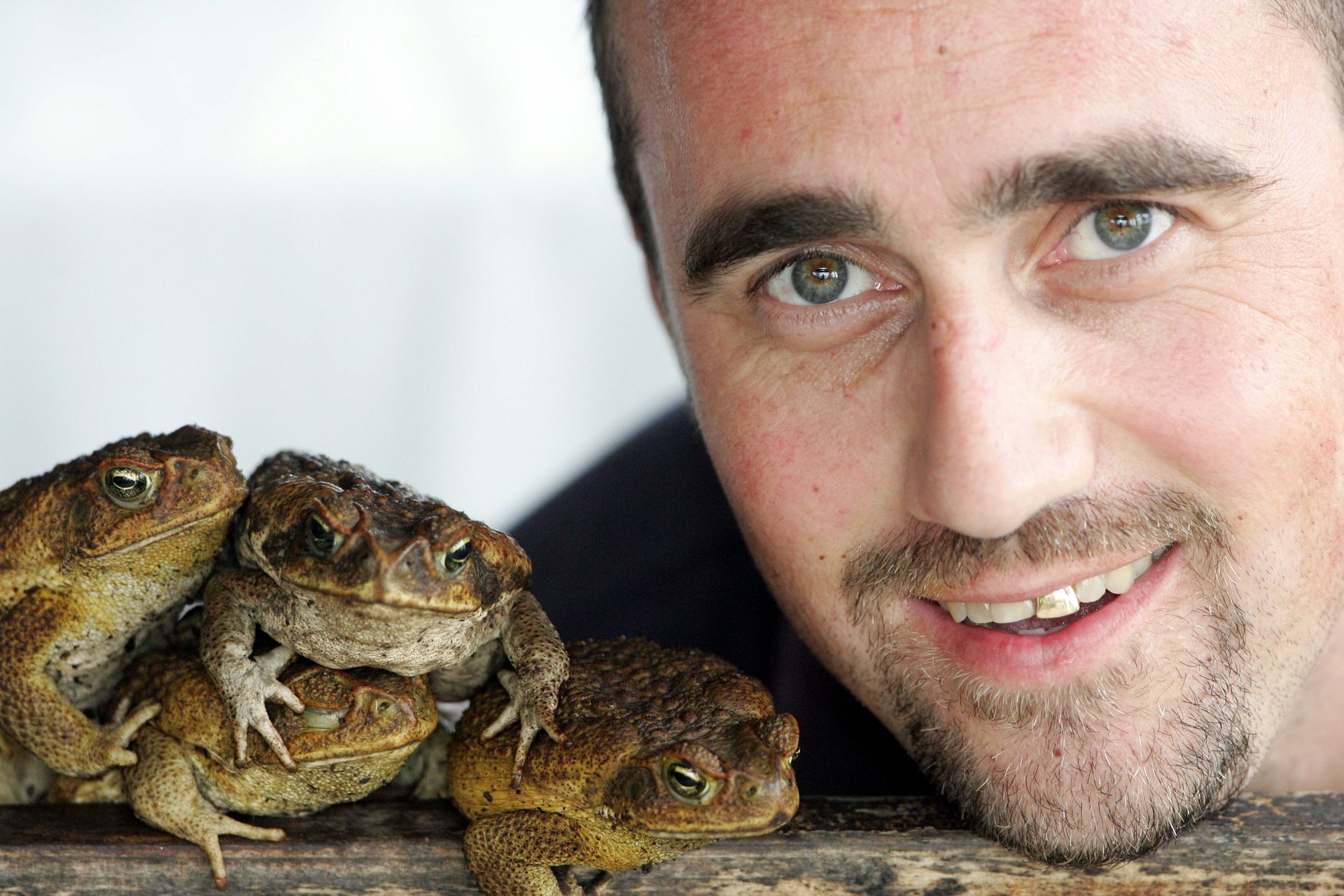Bearded Dragon at Tamborine plays host to Cane Toad Racing Calcutta some Sundays with proceeds to Rural Fire Brigades and other local charities. The Inaugural Cane Toad PESTival will be held 10th-12th December 2004 and will include a huge bounty of cash and prizes for participants involved in the collection of these ugly brown noxious monsters. For further information on this event please go to our whats on page on this website.
We have been humanely disposing of canetoads over the years on our 110 acre property and have seen a positive impact in the seven years. In particular we have seen an increase in the number of green tree frogs, bearded and water dragon lizards over time. We have raised BIG dollars for charities, and turned something BAD for our ecosystem into a positive by “doing our bit”. This brings a smile to the whole Bearded Dragon team and our visitors. We would like to share the “Ugly Truth” with you and hope you find this information helpful for you.
Importantly you must remember “Toads have feelings too you know!” so it is important to dispose of them in the most humane manner possible. We have provided information for you on this matter or alternatively you can go to your local council website or links listed below.
Toadman & the team also urge you to learn how to correctly identify a Toad & its Toadpoles so as not to mistake them for harmless frogs. Teach your children properly, they will love the learning experience.
We would also like to take this opportunity to thank our local community and valued customers who have tirelessly searched for toads on the most bitter cold nights. A perfect way to spend any Saturday evening as far as they are concerned !! There is “strange folk” in them there hills! You are all toadally awesome!
Cane Toads are a PEST to our environment and each female toad lays between eight thousand and thirty thousand eggs at a time, and it takes about four weeks for those to grow into toads, so it doesn’t take long for them to take over our precious earth.
The Cane Toad or Giant Toad has few natural predators and is a threat to small household pets, children, native fauna and animals. They are eating our invertebrates, they’re eating tonnes of food that would otherwise be there for native animals, and because they are such a dominant animal they tend to take over and that’s how they do it.
Only a handful of species (the Snapping Turtle, Elseya latisternum; the Freshwater Snake, Tropidonophis mairii; the crocodiles, Crocodylus porosus and C. johnstoni; and the Water Rat, Hydromys chrysogaster) can sometimes prey safely on them.
They are an incredible animal, they just take every advantage, they are set up for taking over.
A cane toad is quite different to any of Australia’s native frogs. They have soft, leathery skin with a rather bumpy surface, an angular, bony head, an eye with a horizontal pupil, no pads on its toes of webbing on its feet and very large glands surrounding its shoulders. It also has a prominent ridge over the eye running down to the nose. You might be used to frogs taking long jumps, cane toads move with short, rapid hops or a running walk instead. The skin colour is a yellow brown and does not have any green colouration. Males tend to be yellow and smaller than the females which are darker brown often with a pattern.
The call of the toad is also different to any native frog , resembling the monotonous tone of a small running engine.
Toads are active by night and like to sit in open areas where they can observe activity. They are attracted to lights where they will eat large numbers of insects. By day they like to burrow into moist soil such as vegetable gardens, flower pots and drains or move undercover and into holes.
Step 1. Identification. Try to ensure that the target toad has not been confused with a native frog species. Check the websites listed below.
Step 2. The animal can be picked up firmly but gently ( with or without gloves or a plastic bag) by placing one hand in front of it to prevent it hopping away, and quickly placing the other hand over the toad’s shoulders, restricting the front legs but allowing the back legs to dangle.
If you do not feel comfortable about handling toads, a plastic bucket of similar container can be placed over the animal until someone else can assist.
Step 3.Place the animal in a bucket or plastic bag and transfer it to a cool place. Now a positive identification can be made.Step 4. Wash your hands to remove any trace of toad toxin, which may cause irritation if it comes in contact with the eyes.Step 5. Release the frog (if you have mistaken it for a toad) or place the toad in a plastic bag in a freezer until frozen. This will take some hours and is the most humane household method of euthanasia known at this stage.
Step 6. Frozen toads may be buried in the garden as they enrich the soil. The toxins readily break down and are not recycled through plants.
Handling toads is not dangerous to humans provided the hands are washed afterward. The toxins within the toad are only dangerous to humans or animals if ingested.
Cane Toads are a serious risk to small pets, if your four-legged friend is suffering they need to be taken to the vet immediately.
The bigger the dog the less severe the poisoning will be, but you’ll get pretty much an immediate reaction because the toxin is quite painful and they’ll start drooling and shaking their head to try and get rid of the pain. Eventually, they start vomiting and becoming wobbly, then it causes heart attack and death. Enough to bring tears to the eyes of this miniature fox terrier owner and lover. If your dog does pick up a cane toad they basically want to flush the mouth out with a hose, pointing the head downwards and away and obviously pointing the water away from the dog’s lungs and rubbing it to try and get the toxin away from the mouth. This may be done quickly before jumping in the car to get to the vet for professional attention.




